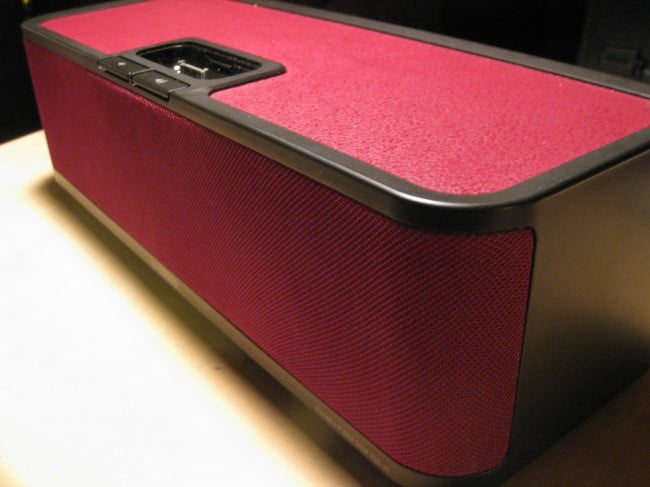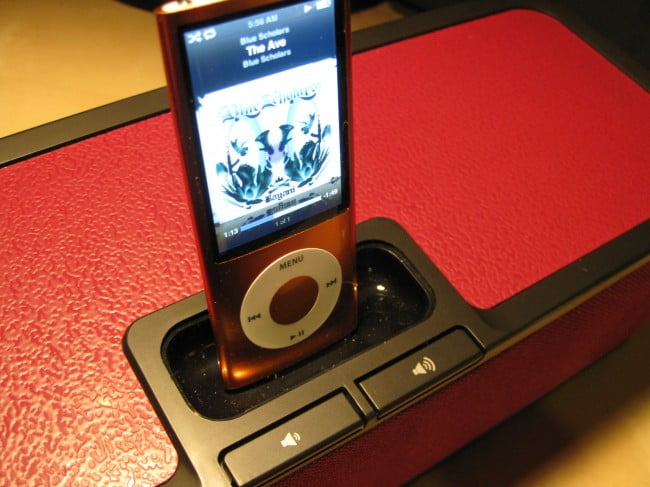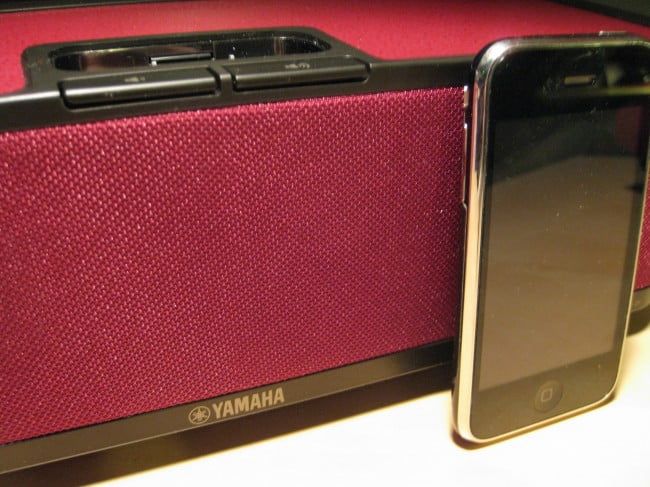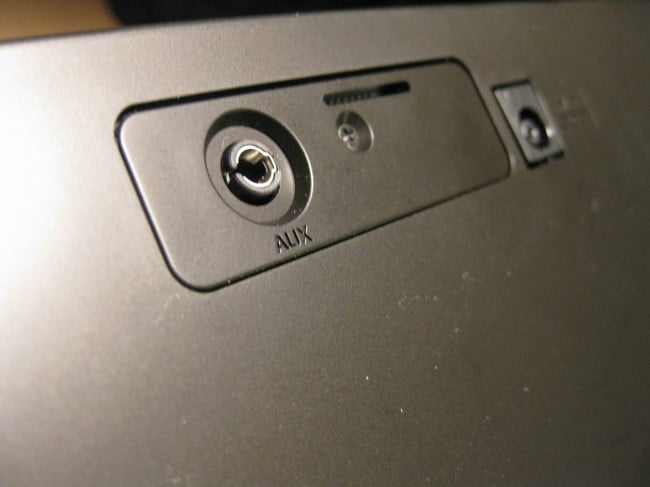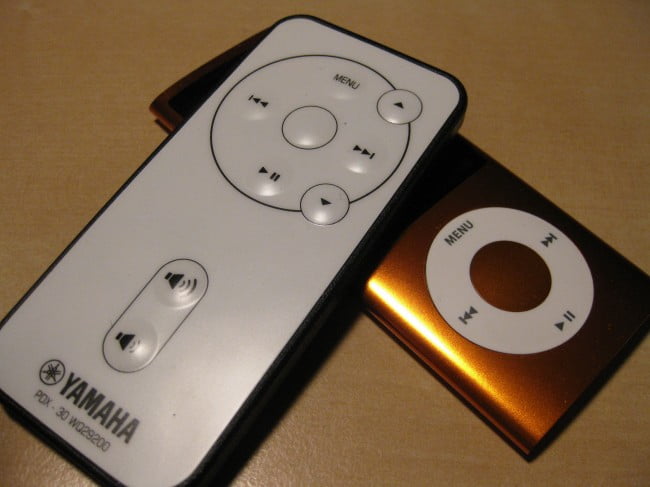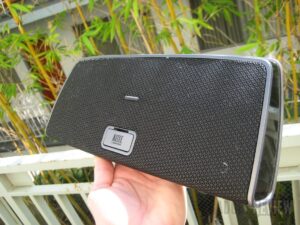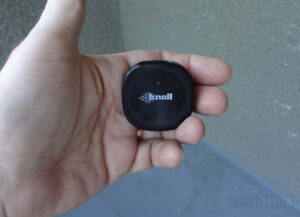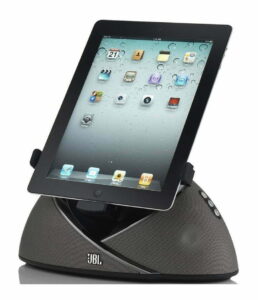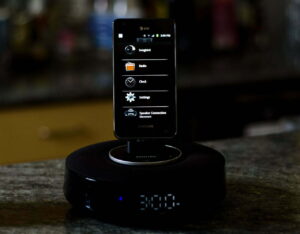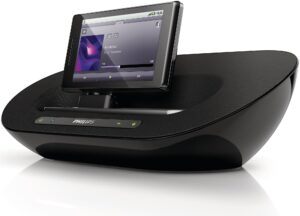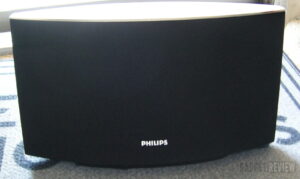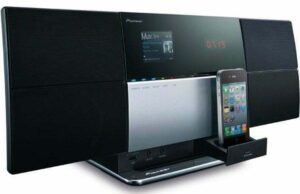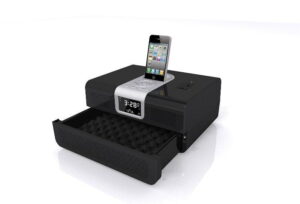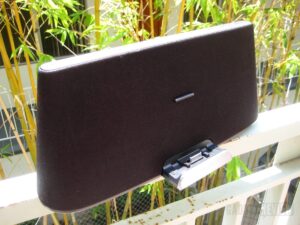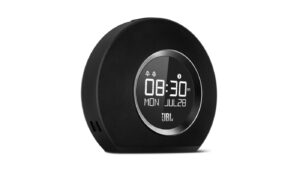[rating:3.5]
Pros
- Little to no sound distortion or interference
- One-size-fits-all for current iPods and iPhones; plus an AUX-in
- Crisp, clear audio presence at medium volumes
Cons
- Isn’t actually “portable” with a 15-volt requirement
- Bass is present, but not impressive
- For $40 more, doesn’t improve much on PDX-30
With just a handful of rivals, Apple’s i-products permeate nearly every facet of consumer culture. From workout companions to digital black books, their ubiquity is matched only by the various appliances and accessories created to enhance, protect and customize them. Housing compressed audio files, iPods and their cousins can’t replace the aural fidelity of physical formats; nonetheless, docking station-speaker hybrids, like Yamaha’s PDX-31, embrace that user-friendly, portable mindset to create easily accessible amplifiers that are perfect for passive listening areas. Speaking of perfect, some of our choices for the best speakers certainly come close. Check them out.
Available in a set of color schemes, Yamaha’s PDX-31 docking station is the company’s iterative successor to their prior desktop audio solutions. Not much has changed since their release of the PDX-30. Still built as a box-within-a-box construct, the flattop device houses twin 3 1/4-inch cone woofers inside of a 13 3/4-inch by 4 1/4-inch by 4 7/8-inch plastic shell. To match the all-black, all-white, or burgundy-with-black-trim choices, similarly colored fabric mesh covers the forward-facing speakers, altogether making for a casual, unobtrusive design. It’s definitely a contender against the highly-rated Bose speakers.
Weighing in at 3.7 pounds, similar in weight to the Marshall Stockwell II, the PDX-31 is a featherweight of stereo options. Its light weight, along with the limited-albeit-universal color palate makes for a product that’s easy to transport and rearrange anywhere in a house or office. Don’t expect to stray too far from an outlet, though, since the only way to juice your music is by way of a 15-volt plug-in. This isn’t too different than some of the top floor-standing speakers, which often require an outlet to work.
Related: If you like this device, you might be interested in our Yamaha Yas 108 review.
Made for convenience, a textured top side gives you back any counter space the system takes up, allowing you to put all of your out-the-door essentials in one place. Yet no matter it’s location, as a “Made for iPod/iPhone” device, Yamaha’s dock welcomes and charges all current-generation Apple devices (in some cases even while encased in protective outerwear), including iPhone 3GS, iPhone 3G, iPhone, iPod touch, iPod classic, iPod nano, and 5th generation iPods.
Looking at the feature set, a few major differences separate the PDX-31 from the previous PDX-30 aside from the inclusion of an auxiliary audio-in port. Needed cables aren’t included in the packaging, but a quick trip to an electronics store lets the speakers play more than just mobile i-devices. This also avails users limited mixing options as audio from both the 30-pin connector and mini stereo jack can play on top of each other. (For presentations, perhaps?)
Tested with an iPhone 3GS and 5th generation iPod nano, the PDX-31 produced rich audio at a comfortable 50 percent volume level. Varied tones from Hans Zimmer’s “Discombobulate” (Sherlock Holmes) spilled into a larger living room setting where quick violin attacks supplementing the playful hammered dulcimer and accordion melodies were clean and enjoyable. Less impressive were punchy, boxy bass tones from the cellos and brass of the same soundtrack, as well as the deeper beats of the Blue Scholars’ catalog. This is understandable given the size and purpose of the product, and it doesn’t detract from the minimal-to-no distortion heard even when streaming music from Pandora. Still, if you’re running full-tilt boogie on your indoor treadmill and are looking for that added adrenaline boost via thumping rhythm, you’re going to need a better solution.
Related: Also check out our Xtrememac Tango TRX 2.1 iPod Dock Speaker System review.
Overall, the PDX-31 is a fairly simple-to-use product. An included card-type remote gives users a 9-button setup that makes for intuitively easy access to iPod menus. The hardware itself is fairly bareboned with only volume controls adorning the speaker’s top-front precipice. This means all of the equalizer controls are handled natively on your iPhone or iPod for varying depths of sound and amplification, but you’re just as likely to stick with the default settings while cooking or cleaning.
Designed as a portable speaker system, Yamaha’s PDX-31 is a subtly stylish, easy-to-operate gadget. Thanks to some smart volume monitoring (another newer feature), you’ll never blow out your ears setting your go-to Apple device in the charging cradle since it will automatically tune down or up to the previously used setting; the unit will power off when not in use; and incoming calls won’t rattle your listening session as music fades out and your ringer fades in. Bass production won’t knock your socks off, but crisp sound quality and presence make it an acceptable addition to any space you’d like a simple mobile music hookup.
That said, unless you require more than just your iPod rocking out at any given time, the system’s predecessor, the PDX-30, is a near-identical solution that can be found for $40 cheaper than the PDX-31’s $169.95 asking.
